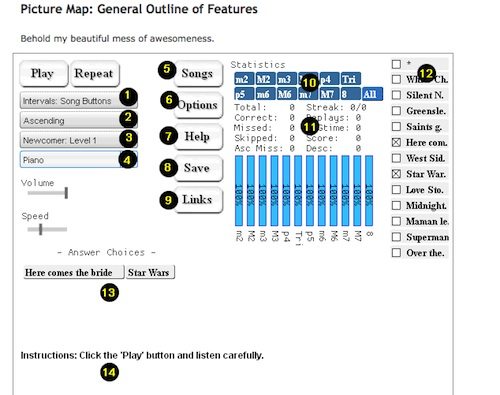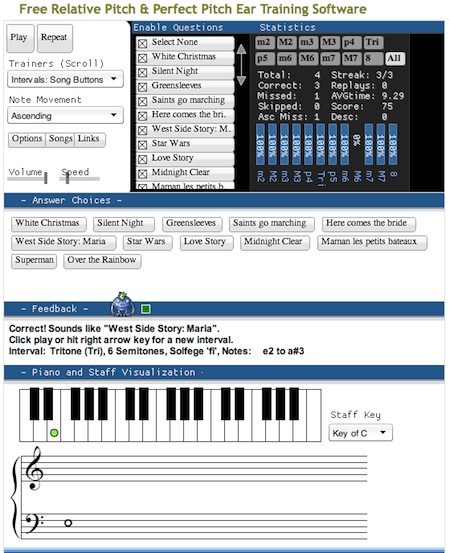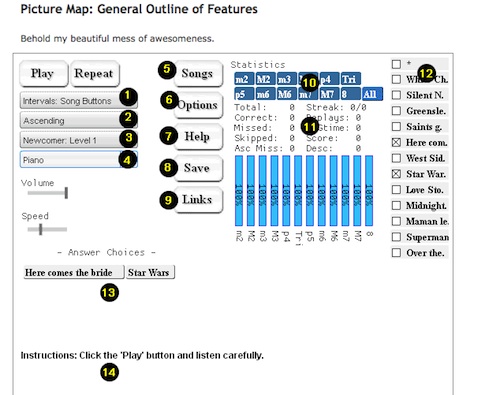Continuing in our series of ear training site profiles…
Interval association is a method of ear training in which you find specific examples of each interval in popular songs, thus giving you a little more context for memorizing each one. This can be especially helpful for those really tricky intervals, but plenty of people like to use this mnemonic device for all the intervals they can—and these people are going to love trainear.com!

How to Use It
There are a ton of options you can alter on this app, so the interface is a little confusing at first. Basically, it’s a multiple-choice system, but the default mode will give your possible answers in the form of popular song titles. You can still choose to answer with the technical name of the interval, but it’s designed to emphasize the song associations. There’s a list of these song titles in the top-right section where you can check or uncheck interval/song pairs you want included, and you can also adjust the difficulty and switch to different modes—like chords and scales—to the left of this list in a series of drop-down menus. If this sounds overwhelming, don’t worry: there’s a detailed how-to page and an instructional video to help get you started.

What You’ll Learn
The method of associative ear training (i.e. using ‘reference songs’ as examples of intervals) is extremely powerful, especially if you’re just getting started. Intervals can be difficult to commit to memory, since you’re really training yourself to measure the invisible distance between two things. Could you tell the difference between twelve and thirteen inches at a glance? Maybe, but it would probably take some practice!
Assigning a song to each interval will give you something more concrete to listen for. Since the goal is to be able to eventually recognize intervals instinctively (i.e. without having to think about it), doesn’t it make sense to merge these intervals with things you already recognize that quickly? Most people don’t have to think too hard to recall the melody of the Star Wars theme song, so once you learn that’s a perfect fifth, that interval will always sound distinct and identifiable.
Suggestions
This brings us to a fairly important consideration, however: what if you don’t know the song “Midnight Clear”? This could make it difficult to practice that interval (a Major Sixth) in this app, and of course does not help in any associative sense. There are two ways around this issue: first, if the program plays an interval and you know it’s not from one of the songs you recognize, you can simply answer in intervallic form by clicking the correct note on the piano display. This is enough to keep the program functioning well, but it obviously misses the benefit of a song association for that particular interval. So the second suggestion is more general: don’t just rely on this program’s associations. Find them in your own favorite songs, or browse trainear’s list with Youtube links.
Summary
This app has all kinds of features, like modes and scales, complex chords, perfect pitch training, and more. I’m focusing on the song associations because it’s something relatively unique about this particular program, but trainear.com has quite a bit more to offer as well.
So if you’re new to ear training, check out trainear’s app and try out the song association method. If you’re not new to interval training and you already have a preferred method, try it out in this program—it’s packed with options and endlessly helpful no matter your level of experience!









